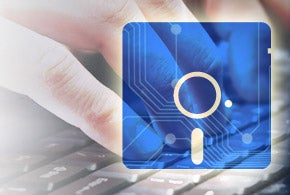App development
 Mobile App Developers Face Major IT Challenges
Mobile App Developers Face Major IT Challenges
A new survey finds that mobile application developers are struggling with both APIs and backend services.
 Reasons for Building Mobile Apps
Reasons for Building Mobile Apps
60.4% of respondents reported building apps to generate revenue. Of those, 43% said that in-app purchases were the best method for making money. Only 19% said they charged for the app itself. Customer loyalty (46%) and awareness (37%) came in second and third as primary reasons for building mobile apps.
 The Trouble With Mobile Apps
The Trouble With Mobile Apps
72.4% said that getting mobile-optimized access to backend data is becoming the biggest challenge to building apps. The number is even higher (79%) for developers at companies with more than 5,000 employees, which is likely a reflection of all the legacy systems those organizations tend to have.
 Where Mobile App Development Time Goes
Where Mobile App Development Time Goes
34% said the time spent on backend integration is more than half the total development effort. Another 41% reported that anywhere from a quarter to a half of their development efforts are spent integrating to backend systems.
 Top Mobile App Development Challenges
Top Mobile App Development Challenges
Tasks involving the building and deploying of mobile APIs ranked highest, at 47%. Debugging API problems and or gaining access to logs came in second, at 43%, followed by finding documentation for APIs (41%) and creating new API documentation (39%).
 Top Enterprise Data Sources
Top Enterprise Data Sources
Custom Web Services dominates the list of enterprise data sources, at 75%, followed by MySQL databases (50%), enterprise content management systems (30%), enterprise Websites (28%) and Microsoft SQL Server databases (28%).
 Top Public Data Sources
Top Public Data Sources
Facebook leads the way, at 55%, followed by Twitter (41%), Google+ (33%) and Dropbox (31%).
 Top Emerging Mobile Markets
Top Emerging Mobile Markets
For the second year in a row, home automation devices lead the pack, with 58.5% of developers saying they’re “very interested” in building apps for the segment. Wearable devices for specific job functions and wearable devices for health care came in next, at 53% and 44%, respectively.
 Interest in Emerging Apple Platforms
Interest in Emerging Apple Platforms
61% are interested in the Apple Watch as a platform. Only 39.2% reported being “very interested” in building apps for Apple TV.
 Rapid Mobile App Development Progress
Rapid Mobile App Development Progress
Among developers who’ve tried low-code rapid mobile application development tools, only about one-fourth described the experience as positive. More than half (58.9%) were neutral; 16% were negative.

